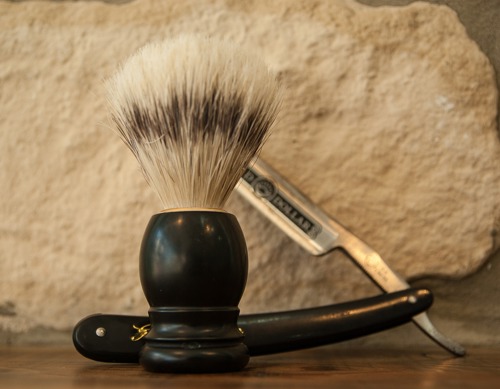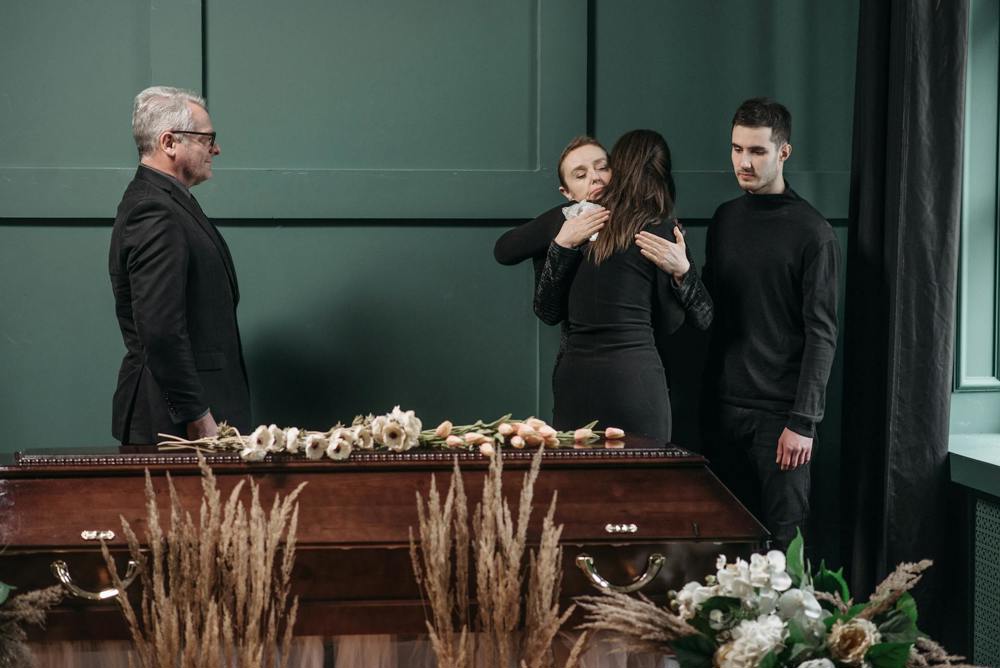Laying out a loved one is an important and personal moment for the bereaved. The final care and laying out gives relatives the opportunity to say goodbye in a way that suits them. And to commemorate and cherish the life of this person, prior to the funeral. That is why it is important to know what is possible, so that you can record any wishes. But also to know what the possibilities are, if someone has not had this recorded.

Final care
You can choose to take care of the body of a deceased loved one before he or she is laid out. For some people, that's a very reassuring and beautiful process. During the final care, the person is cared for, washed and dressed. This can be done in a variety of ways, the most common being washing, shaving, and dressing. When washing the body, you can choose to wash only the face or upper body, possibly with soap. If relatives feel comfortable, they can choose to wash on the lower body as well. In men, it is optional to remove facial hair by shaving.

The deceased is then dressed, with the next of kin deciding what kind of clothing he or she will wear during the laying out and funeral. If the person had glasses, it is possible to put them on during the farewell. But in the end, glasses are not allowed in the coffin. The choice to carry out the care themselves or by our employees is up to the next of kin. Whatever the choice, a funeral director will always offer support where needed.
After the careful care of a deceased person, he or she is laid out. The funeral director dresses him or her in the clothes that have been chosen. After this, the person is laid out, which means that he or she is laid out in bed, in a coffin or, for example, on a laying out board. Laying out gives relatives the opportunity to say goodbye and is an important part of the grieving process and contributes to the processing of loss.
At home, or not?
There are several choices to be made when laying out a loved one. The first choice is therefore whether the next of kin want to lay out their loved one at home, or not. Laying out at home can be an intimate and personal experience. Where there is a lot of space to say goodbye to someone in peace and quiet in an appropriate way in familiar surroundings. While this can provide great comfort for some during the grieving process, laying out at home does not suit everyone. It is also important to consider whether relatives are physically and emotionally capable of doing this.
If laying out at home is not the wish, there are several alternatives. You can think of a 24-hour room where you get a key and can visit the loved one at any time. Or a funeral home, hospice, nursing home, church, or other location. A funeral director can help to find a suitable option if the deceased loved one has not made a choice.
Where can you lay someone out at home?
When the choice is made to lay out in a familiar home environment, the next choice is where and how the person is laid out. This can be done, for example, in bed, but also on a display board, basket or in the coffin. When a loved one is not laid out in a coffin, it can be nice to put the person in the coffin together 1 day before the funeral. In this way, in that safe and familiar environment, you can get used to the next phase of the farewell.
Laying out on the bed
There are many people who choose to lay out the deceased in bed. The most important aspect of this is maintaining the temperature of the deceased. This can be achieved by means of a bed cooling on the mattress, which remains invisible under a sheet. In this method, the deceased is laid out in bed during the period leading up to the funeral, and just before the funeral, usually the night before, the deceased is placed in the coffin.
Laying out in a coffin
Laying out in a coffin is an alternative method that is often chosen for home storage. In this case, the cooling mattress or cooling mattress is placed under the box. Or a crate with an upper cooling system is used. With this one, you have the freedom to decide whether the chest will be open or closed. If you opt for a closed coffin, a photo of the deceased can be added to make the display more personal. In addition to photos, stuffed animals, flowers and small personal belongings can also be placed in the coffin.
Not everything is allowed in the coffin
The law on funeral services sets a number of very specific guidelines for what can and cannot be taken in the coffin. The basic principle of this guideline is that material that goes into the coffin must not cause damage to the environment or to the cremator. In addition, there are also special rules for safety and the risk of explosion during cremations. For this reason, pacemakers must be removed and harmful plastics may only be taken with you when strictly necessary. It is also forbidden to carry the remains of another deceased person or a pet in the coffin to prevent mixing up or merging of ashes.
If you are unsure whether certain objects can be taken into the coffin, ask the funeral director or the crematorium this question. They can provide a detailed explanation and present any alternatives.

Laying out in a funeral home
An alternative option is to lay out the deceased in a funeral home. More and more funeral homes offer 24-hour visitation options so that you can visit your loved ones at any time. If this is not possible, there are limited opening hours or agreed times when the loved one can be visited. Take a look at our range of funeral homes and ask our funeral directors about all available options.
Laying out in a farewell house
In addition to laying out at home or laying out in a nursing home, you can also choose to use the farewell home. This is a small, intimate stay near the residence. It offers a homely atmosphere, where you can say goodbye quietly and relatives can come together. It almost feels like home. You can be with your loved one, listen to music or drink coffee and talk with other relatives. Personal, intimate and close.
How long does it take to lay out?
The law prescribes that a deceased person must be buried or cremated within 6 working days. The number of days for laying out is based on the time of death. A longer period of storage is permitted due to the extension of the period to 6 working days. This also makes light embalming (thanatopraxia) possible. With light embalming, you can lay out the deceased longer and take more time to say goodbye. There is no need to cool the body when light embalming is applied.
Embalming of the body
Embalming, also known as thanatopraxia, is a method of preserving the body of a deceased person and slowing down decomposition through a fluid that is introduced into the bloodstream. This method is divided into traditional and light embalming. Traditional embalming is rarely used, while light embalming is much more common. The light embalming, also known as thanatopraxia, is performed by a thanatopractor and uses a lower percentage of formaldehyde. This keeps the body preserved long enough to arrange funeral matters and to allow the next of kin to say goodbye. Embalming ensures that no refrigeration is required, so that the body can be laid out at home and look beautiful and natural until the day of the funeral.
Sometimes laying out is not possible
A loved one cannot be laid out if there are fundamental objections from the person himself. Not everyone wishes to be laid out. If this is not desired, the body will remain in the mortuary of the funeral director. In addition, it can also happen that someone wants to make his or her body available for scientific research. In that case, too, laying out is not possible.
Laying out when someone is a donor
When someone has a donor codicil, the doctor will remove the relevant organs from the body. This is done in such a way that nothing can be seen during the laying out. Deceased persons who have a donor codicil can also be laid out after the medical procedure and buried or cremated according to the usual procedures.

The Condolence
The possibility to lay out the deceased at home and invite interested parties for a bereavement/condolence visit can be a comfortable and personal way to say goodbye for many relatives. This gives them the opportunity to be with the deceased and pay their last respects. However, not everyone has this possibility, for example if there is no room to lay out the deceased at home or if the next of kin find it too emotionally difficult to have the deceased at home.
Fortunately, funeral homes also offer the opportunity to offer condolences. A condolence evening is often held prior to the funeral ceremony. This offers interested parties the opportunity to meet each other and offer support during this difficult time. In addition, the funeral directors ensure that the deceased is laid out and guarded in a dignified and respectful manner, so that the next of kin do not have to worry about the care of the deceased.
It is important to realize that the period of condolences and farewell is not only important for the next of kin, but also for the deceased himself. It gives them time to say goodbye and process their grief, which contributes to the healing process. Ultimately, the most important thing is to choose what feels best for the bereaved and what best suits the wishes of the deceased.
Examples of how to offer condolences to someone
Offering condolences, it seems so normal but many people still have questions about this. For example, because you find it exciting, are going to a funeral for the first time or because you don't know what else to say than "condolences". The condolences can take place during a condolence evening, or after the funeral itself. Usually a hand is shaken, or a hug is given. It's important that you are sincere and just do what feels right. Respect the wishes of the next of kin.
On top of that, many people just don't like the word "condolences" because of its meaning. The word is derived from the Latin 'con dolore' which means 'with pain'. Many people prefer to say something that makes them feel more positive, with the feeling that this positivity is more comforting.